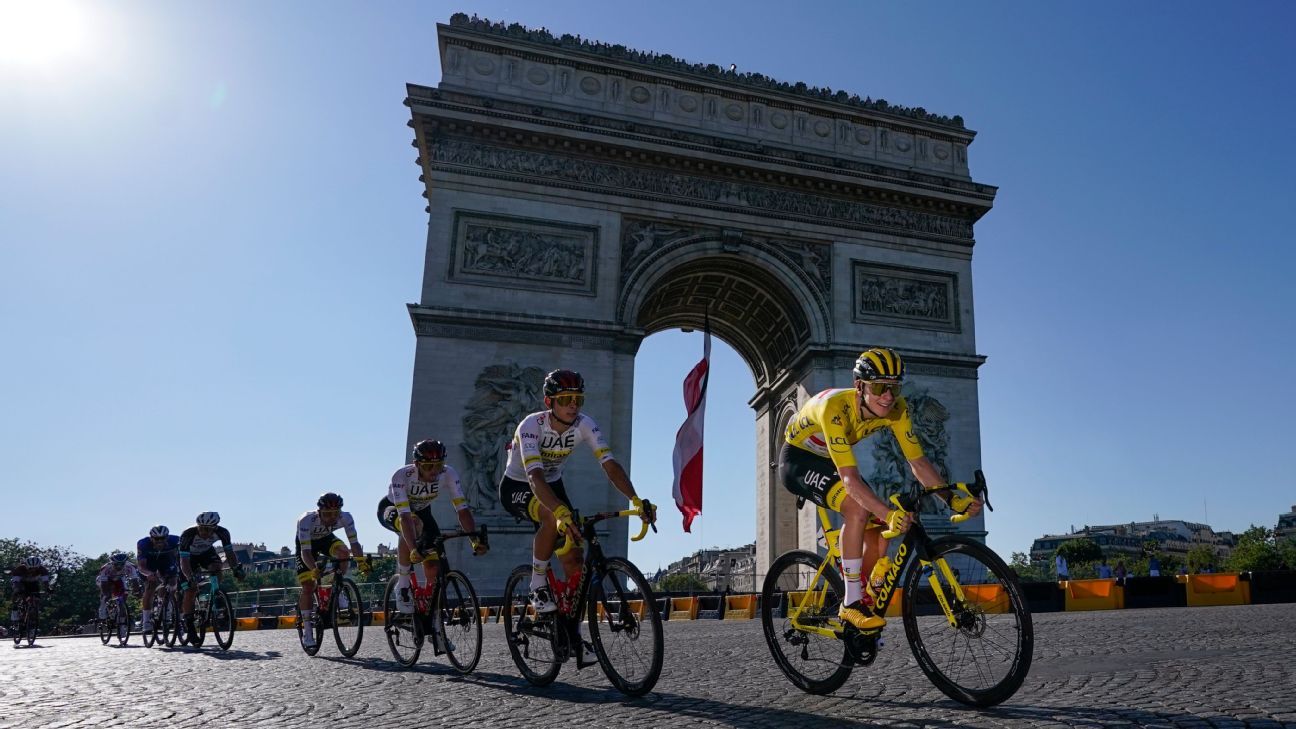PARIS — Starting in the Basque Country in northern Spain, next year’s Tour de France will feature four mountain-top finishes and a Tour record 30 difficult climbs but only one time trial.
Race director Christian Prudhomme revealed the route for the July 1-23 race on Thursday. The 110th edition covers 3,404 kilometers (2,115 miles), encompassing eight mountain stages across five mountain ranges and eight flat stages for sprinters.
Defending champion Jonas Vingegaard of Denmark, two-time champion Tadej Pogacar and 2020 runner-up Primoz Roglic of Slovenia will take in the sights of the Guggenheim museum in Bilbao and the San Mames soccer stadium, which is home to Athletic Bilbao.
“The Guggenheim museum is one of the symbols of the city as well as one of the most famous museums of modern and contemporary art in the world,” Prudhomme said.
The first stage around Bilbao is a hilly one and the next two stages stay in the Basque region. There is a finish at the bay of San Sebastian – which hosted a stage in 1949 – and the first sprint stage hugs the coastline to Bayonne as the race enters southeastern France, with another sprint stage on the fourth stage from Dax to Nogaro.
Climbers hit the Pyrenees mountains on the fifth stage, with a 15-kilometer (9.3-mile) ascent of Col de Soudet. Stage six has a grueling grind up Col d’Aspin, a daunting 17-kilometer (10.5-mile) trek up Tourmalet before finishing with a similar-length climb to Cauterets-Cambasque.
The ninth stage on July 9 sees a spectacular climb to Puy-de-Dome, a famed volcanic crater in the Massif Central region of south-central France which last hosted a stage 35 years ago. In 1964, French rivals Jacques Anquetil and Raymond Poulidor contested a memorable fight to the summit.
The first rest day follows in Clermont-Ferrand on July 10.
After cutting through the Beaujolais wine region, there is a big climb of 17.4 kilometers (10.8 miles) on stage 13 up Grand Colombier in the Jura region, where defending Tour champion Egan Bernal cracked in 2020.
The Alps will test tired climbers and offer contenders further opportunities to attack on difficult treks such as up Joux Plane on stage 14 and Croix Fry on stage 15, which ends with a hilltop finish at .Saint-Gervais Mont-Blanc.
Riders have a rest day before facing a difficult and hilly 22-kilometer (13.6-mile) time trial, then a mammoth mountain stage on the 17th stage, the hardest of the race. The last of four climbs is a 28.4-kilometer (17.6-mile) slog up Col de la Loze, before sweeping downhill to the Courchevel ski station which hosts World Cup slalom races.
Two sprint stages follow before six short but sharp climbs on the penultimate stage from Belfort to Le Markstein ski station in the Vosges region.
As usual the race ends with a processional stage on the Champs-Elysees that is usually only contested by sprinters.
Belgian rider Wout van Aert could be an outsider for the win. He won the green jersey for best sprinter but showcased his all-around ability with several exciting attacks last year.
Dutchwoman Annemiek van Vleuten defends her title when the women’s Tour begins on July 23 – again on the same day the men’s race ends – and ends July 30.
The eight-stage race covers 956 kilometers (594 miles), starting from Clermont-Ferrand. It features two mountain stages, including a summit finish on the renowned Tourmalet climb on the penultimate stage, and ends with a time trial in Pau.
